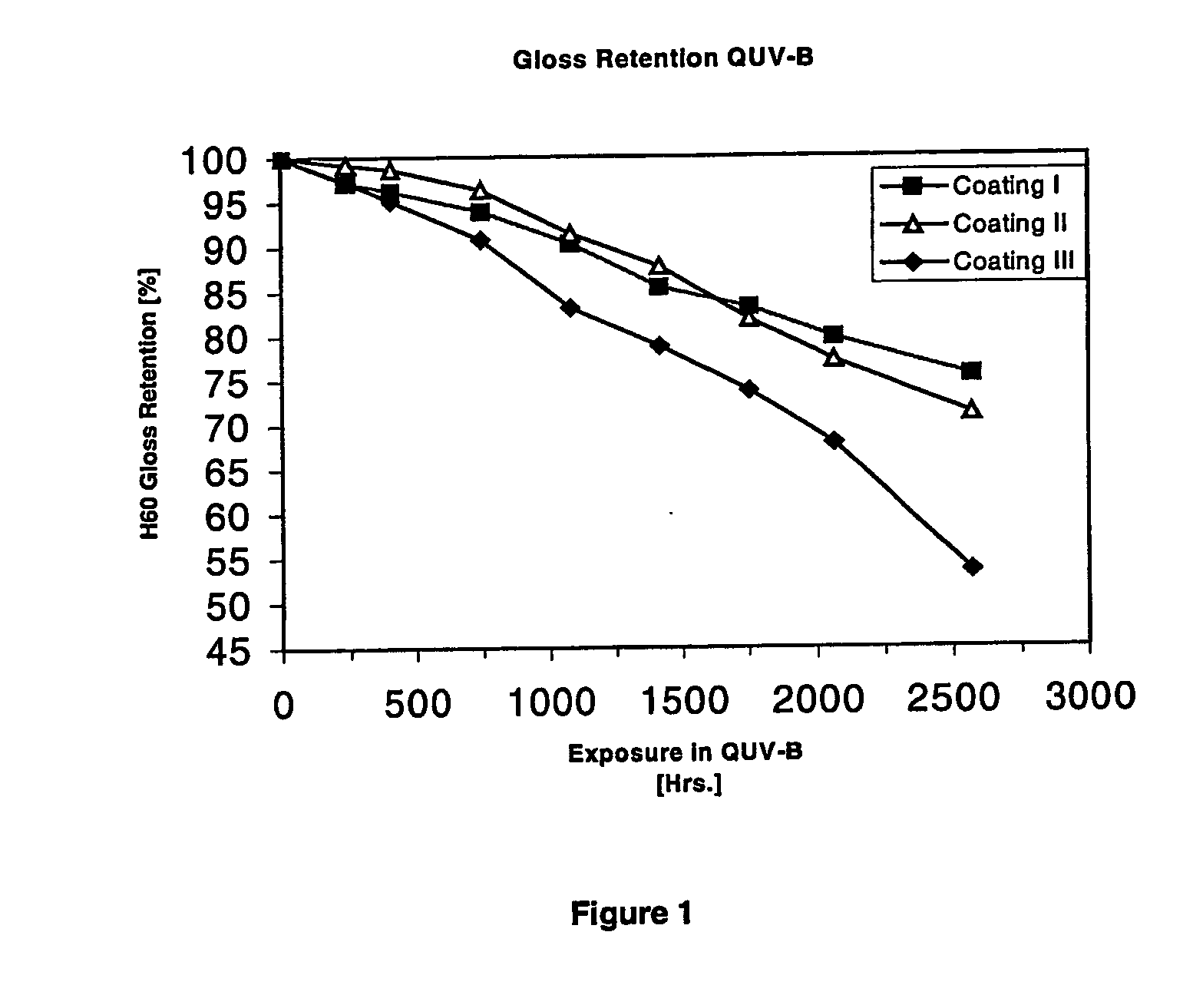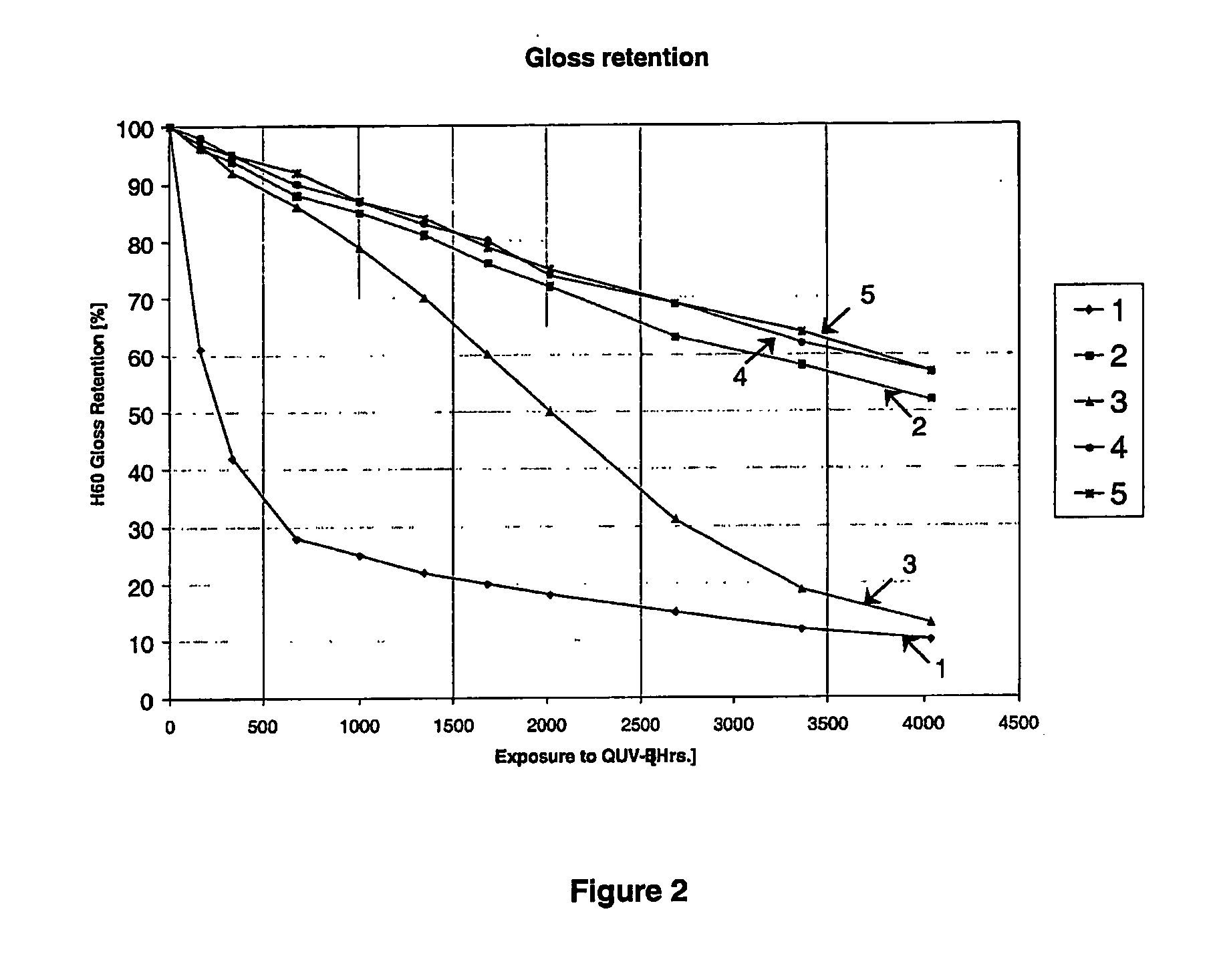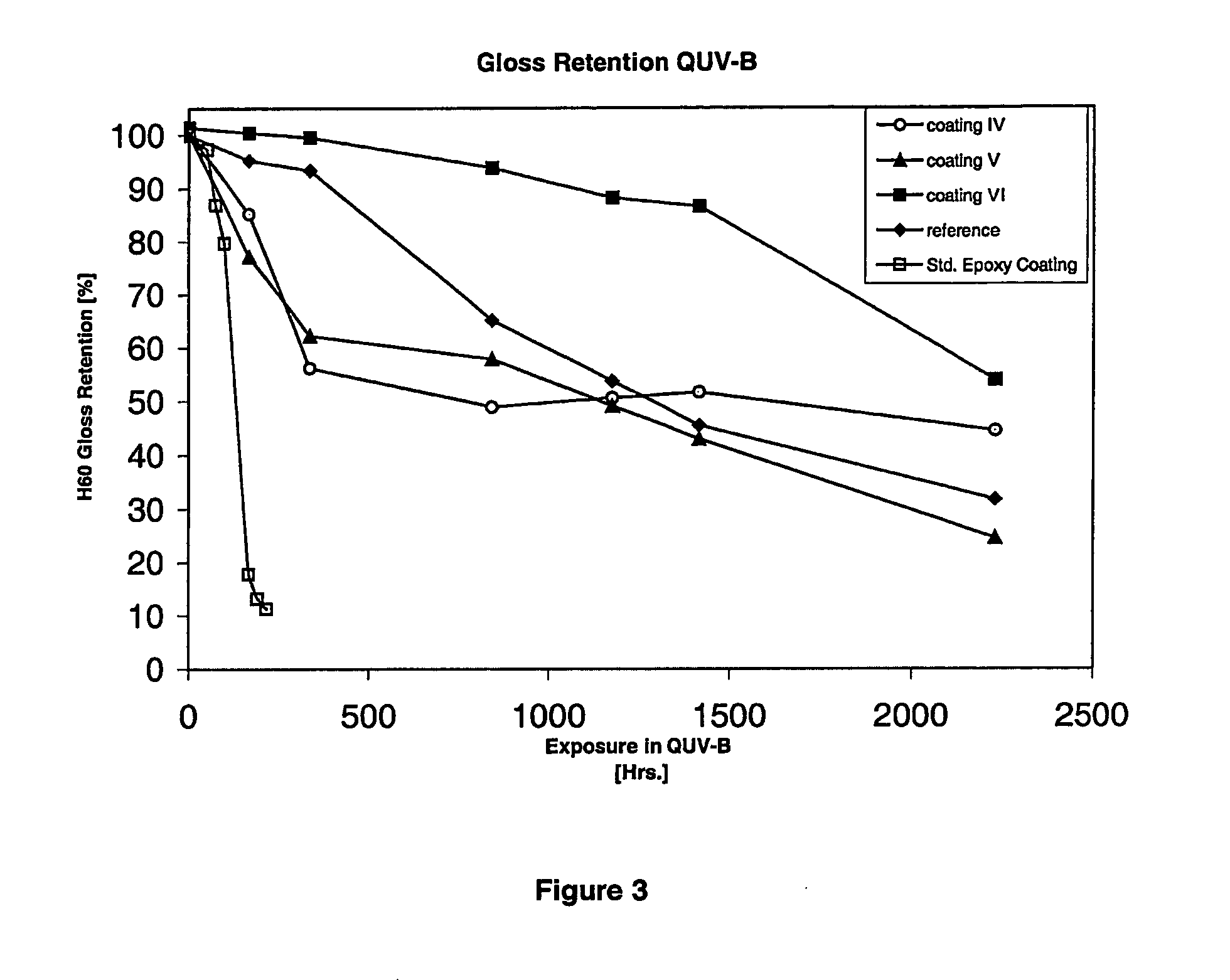Amino-functional polysiloxanes and their use in coatings
a technology of amino-functional polysiloxanes and coatings, applied in coatings, epoxy resin coatings, etc., can solve the problems of limited gloss and color retention, poor gloss retention, etc., and achieve the effects of improving hardness development, improving mechanical cohesive strength, and improving gloss retention
- Summary
- Abstract
- Description
- Claims
- Application Information
AI Technical Summary
Benefits of technology
Problems solved by technology
Method used
Image
Examples
example 1
[0120] 140 g of ethanolamine and 1110 g of polysiloxane resin Silres SY231 (Wacker) are mixed in a reaction vessel under nitrogen atmosphere equipped with a mechanical stirrer, a distilling column and a condenser. Titanium (IV) butoxide is added. The mixture is then heated at 170° C. until all alcohols are distilled. The last volatile alcohols formed during reaction are then removed by applying vacuum. The modified polysiloxane has a MW of 1061 and a polydispersity of 4.99 (determined by GPC). NMR analysis showed that 0.6% of ethanolamine is free and the concentration of the MeO groups is 10.3%, the butoxy group is 5.5% and the bonded aminoethyl group is 16.6%. The amino value is 106.3 mg KOH / g.
example 2
[0121] 129 g of 1-amino-2-propanol and 832 g of polysiloxane resin DC3074 (Dow Corning) are mixed in a reaction vessel under nitrogen atmosphere equipped with a mechanical stirrer, a distilling column and a condenser. The mixture is then heated at 160° C. until all alcohols are distilled. The last volatile alcohols formed during reaction are then removed by applying vacuum. The modified polysiloxane has a MW of 1006 and a polydispersity of 7.45 (determined by GPC). NMR analysis showed that 2.3% of 1-amino-2-propanol is free and the concentration of the MeO groups is 26.0% and the bonded 1-amino-2-propyl groups is 13.7%. The amino value is 105 mg KOH / g.
example 3
[0122] 153 g of 2-amino-1-butanol and 832 g of polysiloxane resin DC3074 (Dow Corning) are mixed in a reaction vessel under nitrogen atmosphere equipped with a mechanical stirrer, a distilling column and a condenser. 45 g of Heptane and 1 g of titanium (IV) butoxide are added. The mixture is then heated at 175° C. until all azeotrope mixture is distilled off. The last volatile alcohols formed during reaction are then removed by applying vacuum. The modified polysiloxane has a MW of 1123 and a polydispersity of 3.16 (determined by GPC). NMR analysis showed that 3% of 2-amino-1-butanol is free and the concentration of the MeO groups is 25.0% and the bonded 2-amino-1-butyl groups is 14.8%. The viscosity (Haake, 23° C.) is 6.5 dpa.s. The amino value is 103.8 mg KOH / g.
PUM
| Property | Measurement | Unit |
|---|---|---|
| Fraction | aaaaa | aaaaa |
| Percent by mass | aaaaa | aaaaa |
| Percent by mass | aaaaa | aaaaa |
Abstract
Description
Claims
Application Information
 Login to View More
Login to View More - R&D
- Intellectual Property
- Life Sciences
- Materials
- Tech Scout
- Unparalleled Data Quality
- Higher Quality Content
- 60% Fewer Hallucinations
Browse by: Latest US Patents, China's latest patents, Technical Efficacy Thesaurus, Application Domain, Technology Topic, Popular Technical Reports.
© 2025 PatSnap. All rights reserved.Legal|Privacy policy|Modern Slavery Act Transparency Statement|Sitemap|About US| Contact US: help@patsnap.com



